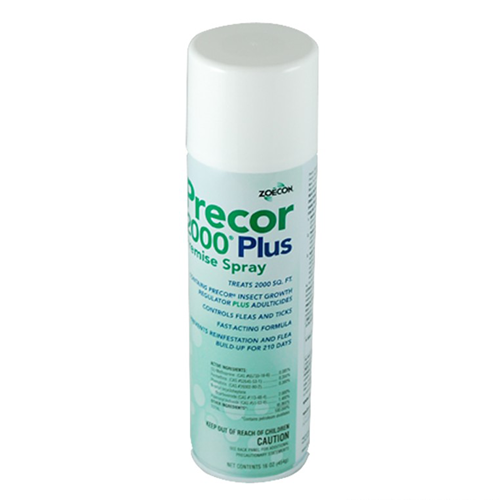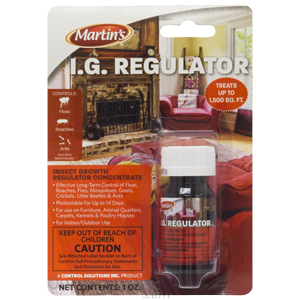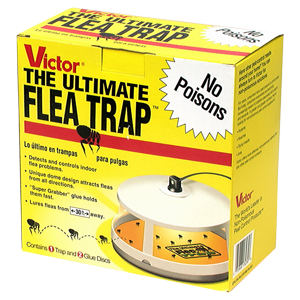The 4th step of integrated control involves treating the indoor environment. An insect growth regulator (IGR) is used to prevent eggs and larvae from becoming adults. The IGR will last for 7 months indoors, preventing re-infestation.
Supplies
Fleas in the Home Environment
Flea Life Cycle & Habitats
The bulk of flea infestations consist of immature stages. Populations break down into 50-57% eggs, 34-35% larvae, 8-10% pupae, and 1-5% adults. Adult fleas live on their host. Immature stages live in the environment. Eggs are laid on the host animal, but they aren’t sticky and soon drop off. The eggs develop where they fall in the environment. In homes, 83% of immature fleas live within carpets.
Flea eggs fall wherever infested hosts wander. For larvae to survive, food must be available upon hatching. They’ll starve within 3 days without food. The larvae must consume flea feces and flea eggs. Areas with both these food sources aren’t widespread. They occur where pets spend a lot of time resting and grooming. Common flea hot-spots occur around seating and beds, and near pet bedding.
Protected Micro-habitats
Flea larvae avoid light and burrow deep down into their substrate, such as the base of the carpets. There, they are protected from control measures. Insecticides can’t penetrate carpets well. Carpet fibers have a large surface area, which reduces the amount of active ingredient per unit area. And the fibers absorb and wick away the treatment, keeping it near the canopy. Little can be done to kill pre-adults located deep in protected areas of furniture, carpet, cracked floors, and baseboards. Many present at the time of treatment won’t be affected. Patience is required, as these stages need to mature, emerge as adults, and die.
It’s crucial to treat the environment with a product designed for long-term control, such as an insect growth regulator (IGR). The current generation should be the last generation. Any new eggs that fall onto the treated surfaces won’t be able to survive.
Adulticides
Adulticides, such as permethrin and pyrethrins, aren’t very effective for environment flea control. These ingredients primarily target the adult stage. Adulticides aren’t ideal for killing immature stages. Firstly, the carpet penetration issue previously mentioned. Next, over twice as much insecticide is needed to kill larvae compared to adults. Thirdly, adulticides have a short residual effect, only persisting in the environment for up to three weeks. Sometimes activity is so short-lived that adult fleas emerge and survive 1-2 days after spraying.
Adulticides are often included in flea premise sprays. They kill recently emerged adult fleas in the environment. However, the IGR in premise sprays is actually controlling most of the infestation. Sprays without an IGR don’t provide adequate control.
Insect Growth Regulators
IGRs are effective for environmental flea control because of their superior residual effect. They remain active for 7 months indoors. Since carpet penetration is difficult, the long-lasting activity plays an important role in efficacy.
The two common IGRs found in flea control products are pyriproxyfen (Nylar) and methoprene (Precor). These compounds work by mimicking naturally occurring juvenile hormone (JH) in insects. When JH is present, insect larvae won’t mature onto the next stage of life. JH naturally recedes at certain points of development, triggering molting and metamorphosis. However, if IGR is present during these times, the insect is forced to remain, and eventually die, in an immature state.
How IGRs Affect Fleas
When eggs are exposed, the eggs won’t hatch or larvae die upon hatching. IGR-exposed larvae are unable to pupate into adults. Young cocoons (before pupating) exposed to IGR won’t emerge as adults. Exposed pupae become adults sooner and die prematurely. Exposed adult females can’t lay viable eggs. IGRs are mildly toxic to adult fleas, killing them within 8 to 10 days. Additionally, adults excrete IGR-tainted feces, which larvae will then consume and succumb to the effects.
How IGRs Control Flea Infestations
Immature fleas live in carpets. Spraying an IGR helps control these stages, thereby eliminating indoor reservoirs where adult fleas emerge from. New eggs falling onto treated surfaces also won’t survive. This eradicates flea populations faster, and also helps prevent re-infestation.
Only treating the environment with an IGR won’t end an infestation. Adult fleas will continue living pets and laying eggs. Effective flea control also involves treating pets.
Premise Sprays with IGR
Premise sprays typically contain an IGR and an adulticide. The adulticide quickly kills any emerged or emerging adults in carpets, but it is less effective against larvae. Combining IGRs with adulticides boosts the residual effect of the adulticide.
IGR Spray Concentrate
IGR concentrates are a good option for those who don’t want to release a concoction of various chemical insecticides into their home. These concentrates only contain the insect growth regulator ingredient, which is considered significantly safer than traditional insecticides.
Tips for Success
Be Patient
The environmental flea stages won’t die right away. They live in protected niches. Before the infestation ends, all of the young environmental stages need to mature, emerge, and die. It usually takes around 2 months (sometimes longer) before an infestation completely ends.
Spray Thoroughly
Thoroughly spray the premises. Ensure flea hot-spots, where pets frequently rest, aren’t neglected. Effectiveness and efficiency of insecticides can be increased if areas where pets regularly rest or sleep are emphasized. Pet habits should be included in the design and implementation of control strategies. Eggs fall in these areas, and larvae don’t move far. Still, larvae may move under furniture, or down beneath seat cushions. It’s best to move furniture when spraying, and remove the seat cushions to treat the furniture.
If follow-up treatments are needed, targeting hot-spots is often sufficient. However, wait at least 14 days before any follow-up treatment.
Adhere to Product Instructions
These are common instructions for most flea premise sprays:
If possible, remove furniture from the rooms to be treated. Vacate all the people and pets from the home. Cover and unplug aquariums and fish bowls. Cover (or remove) food, utensils, and food processing surfaces.
Spray from a distance of two feet. Use a sweeping motion until the area is slightly damp (not wet). Don’t over-apply. A 100 sq. ft. area can be treated in about 10 seconds. Walk backwards to avoid stepping on treated areas.
Avoid contact with skin or clothing. Wash hands with soap and water after use. Ventilate and don’t re-occupy the premises until the carpet has dried.
Optional Flea traps
Fleas traps attract and capture emerging adult fleas from the environment. Traps are useful for assessing flea populations and for determining when the infestation has ended. However, they’ll do little to end an infestation on their own.





You must log in to post a comment. Log in now.